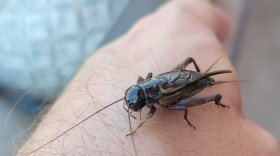This story was originally published in October 2023
After months of heat and drought, nature often takes time to recover. Trees don’t regrow overnight, animal populations can take years to rebound. But at least one little Central Texas wildflower seems to take no time at all.
It’s called the rain lily, and you might have noticed its small white blooms popping all over town.
“I think what makes them so captivating is that they're ephemeral,” says Andrea DeLong-Amaya, director of horticulture for the Lady Bird Johnson Wildflower Center. "They're not there, and then suddenly they're there!”
As the name suggests, the rain lilies’ growth is triggered by rainfall. They are capable of sprouting up seemingly overnight because they grow from small bulbs in the ground that may actually have been waiting for years to bloom.

“We don't really notice [the bulbs] too much,” DeLong-Amaya says. “They're often hidden by other vegetation or maybe they're getting mowed.”
Those bulbs have evolved to store energy and moisture, through times of prolonged drought. Then, when a triggering rainfall occurs, all that energy pushes out the little white flowers that you can see appearing in patches.
That’s why they can grow so quickly, DeLong-Amaya says, “the stored energy in that bulb.”
The flowers seem to vanish almost as quickly as they appear. Once pollinated, rain lilies quickly form seed pods that drop dozens of flat black little seeds to the ground to restart the whole process.
DeLong-Amaya says rain lily flowers typically emerge a striking white, then “fade into this really lovely pink color.”
She’s also noticed another native lily species this fall called a copper lily, which has “a sulfur yellow flower that kind of fades to an orange red.”
She says the flowers will probably keep blooming through the autumn months after heavy rainfalls.











